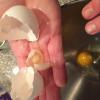“His good heart does not allow him to think constellationally. He does not connect the dots or see the patterns of power behind the isolated “disasters.” All he sees are hungry mouths, and he, in his own advocacy-by-journalism way is, putting food in those mouths as fast as he can. All he sees is need, and he sees no need to reason out the need for need.” (Cole 7)
At first when I watched the Kony 2012 video, I supported Jason Russell’s non-profit organization, the Invisible Children. I mean, it would be so cruel not to agree that appropriate measures had to be taken to eradicate the atrocities caused by the warlord, Joseph Kony. Placing myself in the Cole’s shoes, would I give a donation in support of the emaciated children? Yes, I would.










